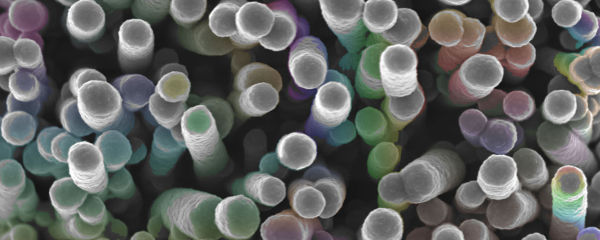What I’ve Learned:
“Agonist: It always gets the best reception.”
If you read a lot — or watch movies, because let’s face it, this is America and words are hard — then you might be familiar with the term “antagonist”. That’s the villain of the story. The rogue billionaire. The dirty cop. The Hamburglar.
You might think if you change the “ant(i)-” to “pro”, you’d get “protagonist”, and that would be the story’s hero. And you’d be right! From Sherlock Holmes to Pippi Longstocking to the velociraptors in Jurassic Park movies, these are the characters we root for to solve mysteries, teach valuable lessons and rip enemies to shreds with their powerful claws.
Not necessarily in that order.
But where does this leave the root word? If antagonists are bad and protagonists good, what are regular plain old agonists? Hollywood doesn’t have an answer. That’s where biochemistry steps in.
In strictly scientific terms, an agonist is a chemical that is recognized by a protein on the surface of a cell, and causes some response within the cell. The cell surface proteins are called “receptors”, because their main job is to sit there peeking outside the cell, waiting for these agonists to come along and be recognized.
Basically, receptors are like security guards in an office building. Maybe the guard knows you, and you get to go inside. Or maybe you’re delivering pizza, so the “receptor” guard calls upstairs and signals someone to hoof it down to pay you. Maybe you’re the Hamburglar, and the response is to call the cops on you. Or Mayor McCheese. Or velociraptors. I’m not really sure how corporate security works, frankly.
The point is, as an agonist, you’ve been recognized, and that’s kicked off some sort of response. That happens inside our cells all the time, and there are thousands of types of agonists (or more) produced and used by our bodies themselves.
Dopamine, for instance, is a neurotransmitter important for several brain functions, and also an agonist for a family of (aptly-named) dopamine receptors, which bind dopamine on the surface of cells and kick off various responses. But there are many others. The agonist estrogen has estrogen receptors. Agonist androgens have androgen receptors. Agonist growth factors, growth factor receptors. And so on.
That’s the textbook definition (more or less), and all true (except the part about velociraptors, probably). But the above only describes endogenous agonists, meaning those that are produced naturally — and that’s probably not the ones you’re most likely to hear about. Because we don’t just make agonists with our bodies; we also make them with our laboratories.
If you ever read about an “agonist” in a medical or science blurb, it’s probably describing an exogenous agonist, which is usually lab-generated. These are chemical compounds and molecules that behave like natural agonists, when it comes to specific receptors in the cells. So a “dopamine agonist” would bind dopamine receptors, and when it did, the cell would kick off the same response as if it were actually binding a “real” dopamine molecule.
Think of this back in the office building. You’re not delivering pizza now — but maybe it’s falafel. The call goes upstairs just the same. Or maybe you can use someone else’s ID card to fool the guard. That might not work every time, so it’s not completely reliable. But it’s close.
Exogenous agonists work the same way. They’re not always perfect matches, but the good ones get the job done. And for some diseases and conditions — particularly where patients have a deficiency of the natural agonist — these “close-enough” agonist drugs can be a huge help when they’re able to fool the cell’s “security guard” receptors.
Just watch out when they don’t. Because even tiny little attack velociraptors are terrifying.



